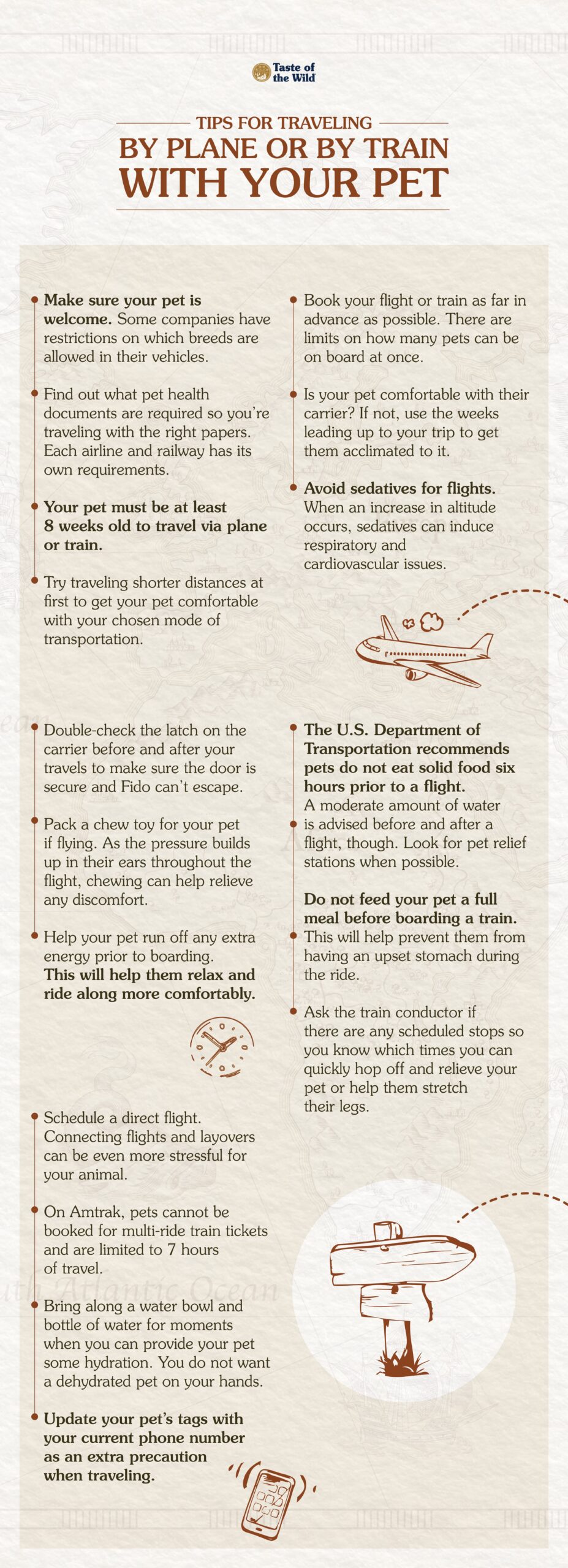
It’s decided. You’re packing your bags and heading overseas. Whether it’s for a few weeks, a few months or forever, there’s a lot you need to do to prepare for international travel. And that includes deciding on how your furry friend fits into your travel plans. If you’re a pet parent whose dog goes wherever you go, you may be used to vacationing with your pet. But an overseas trip may have you wondering if your dog can travel internationally with you. The short answer is: it depends.
It depends on where you’re traveling to and what their pet entry requirements are. It depends on your dog’s health and whether they’re healthy enough to travel internationally. It depends on how long you’re staying there.
There’s a lot to think about when planning international pet travel, so we’ve compiled a few tips and resources to help you out. Most international travel involves flying, so we’re going to focus on traveling by plane, but a lot of this information will also apply to other forms of transportation.
Your Dog Can’t Head to the Airport Just Yet
Taking your dog out of the country can’t be a spur-of-the-moment decision. Flying with a dog internationally requires a lot of research, specific paperwork and health checks. All of this preparation can take a while, so make sure you start the process months before you intend to travel.
First, Is Your Dog Healthy Enough for International Travel?
Flying internationally can be stressful for people, so imagine what it’s like for your dog when they have no idea why their world’s been turned upside down. Even dogs who are well-seasoned road trippers may find flying stressful. So before you get too far into planning, talk to your veterinarian about whether your dog is healthy enough to fly or travel in general. Your vet may recommend leaving your dog at home if they have an underlying medical condition that could be exacerbated by stress or flying at high altitudes.
This is a good time to make sure all of your dog’s vaccinations are up-to-date. As you’ll read later in this article, your dog will probably need a health certificate that confirms they are up-to-date with their vaccinations (as well as other health checks). You should also talk to your vet about where you are traveling to and if they recommend other vaccines or medications for that location.
If you’re used to giving your dog anti-anxiety medication when you travel by car, this may not be possible while flying. Giving dogs sedatives or tranquilizers is typically not recommended for plane travel as the medication effects can be unpredictable at high altitudes and could induce respiratory (breathing) or cardiovascular (heart) issues. Calming wraps or anxiety vests may also not be permitted by the airline.
Second, Research Your Destination Country
The country or countries you’re traveling to will have their own specific entry requirements for dogs. The United States Department of Agriculture (USDA) Animal and Plant Health Inspection Service (APHIS) has a list of current pet travel health requirements for specific countries.
You will need to check that your dog’s breed is not banned in your destination country. Additionally, some countries don’t allow dogs to enter if they are traveling from a destination that has a higher risk of rabies. Your dog may need blood tests to check for rabies or other infectious diseases. For some countries, your dog will need to be microchipped with a specific type of microchip, so your dog may need a second microchip to meet that requirement.
When traveling overseas with a dog, you should be aware that some countries have quarantine requirements — even if you complete all of the required paperwork and health checks. So if you’re only going to be there for 10 days and they have a 10-day quarantine period, it doesn’t make sense for you to bring your dog. Restrictions could also apply to layovers in a different country to your final destination, so check their pet travel requirements, too.
Some countries may not be as pet-friendly as the U.S. You should check that there are dog-friendly hotels, stores, restaurants, etc., in the places you will be visiting. Remember to also check whether dog-friendly transportation is available, particularly public transport.
If you read about getting your dog a “pet passport,” this typically means the collection of documents needed for your dog to enter a foreign country — they’re not actually going to get a passport with a cute photo. However, the paperwork issued by veterinarians in a European Union member state is called an EU Pet Passport (these can’t be obtained in the U.S.).
Does Your Dog Need a Health Certificate?
Many countries require you to have an international health certificate for your dog, which was issued by a USDA accredited veterinarian and endorsed by APHIS. Health certificates typically need to be issued within a specific time frame before you travel, so check what that timeline is for the country you’re visiting. Other requirements often requested by foreign countries include blood tests, vaccinations, microchips and permits.
There are also regulations about bringing your dog back into the U.S.— even if your dog was originally from the U.S. To import a dog into the U.S., there are Centers for Disease Control (CDC) requirements and USDA APHIS requirements. There could also be requirements from other agencies or U.S. states or territories. It is your responsibility to check what those requirements are.
Can Service Dogs or Emotional Support Animals Travel Internationally?
Service Dog Registration of America provides information on flying with registered service dogs. You should check with the airline on their policy about traveling with a service animal or emotional support animal.
Can You Take a Dog on an International Flight?
You will need to check that the airline you want to fly with accepts dogs and whether they have any restrictions on which dog breeds they allow. For example, brachycephalic breeds — smushed-faced dogs like pugs, French bulldogs, boxers and Boston terriers — may not be allowed to fly, especially in the cargo hold. Brachycephalic dogs can have trouble breathing under normal conditions and so generally don’t make good air travelers.
Tips on Booking a Flight When Traveling Abroad with a Dog
You should book your flight as soon as possible because the airline may have restrictions on how many pets can be on one flight. If possible, choose a direct flight to limit the amount of time your dog is in their carrier. Multiple flights or layovers could add to your dog’s stress.
If you have a small dog, they may be able to accompany you in the cabin if they’re in an airline-approved carrier. Typically, the carrier must be able to fit comfortably under the seat in front of you. Larger dogs on international flights will need to travel in the cargo bay. Keep in mind that the airline may have weather restrictions that prevent dogs from traveling in the cargo bay during extreme temperatures.
Airlines typically have specific requirements for dog crates or carriers, so be sure to look those up for your specific airline. If you are switching airlines or flying with partner airlines, make sure you know about those airline pet policies, too.
Preparing Your Dog for Air Travel
Once you ensure you have the pet carrier that the airline requires, let your dog become acclimated to it before they fly. You could put them in the carrier and take them for rides in the car to fun places like the dog park or a pet store. That way going into the carrier won’t be another new or scary experience for them at the airport.
When the day arrives, it’s a good idea to run off some of your dog’s energy before you leave, to help them relax and ride along more comfortably. Check with the airline if they have restrictions on giving your dog food and or water before your flight. If they don’t, you can ask your vet.
Before you leave your home, make sure you double and triple check that the latch on the carrier is secure so you aren’t chasing your dog around the airport and they don’t get loose on the plane. If the airline allows it, you could include a chew toy in the carrier so that your dog has something to keep them occupied, and chewing can help with pressure buildup in their ears.
As you can see, there is a lot of preparation needed if you’re thinking about traveling abroad with a dog. If you’re only going for a short trip, it may be better to leave your dog with a friend or family member, a pet sitter or a boarding kennel. You can always take them to a dog-friendly vacation destination in the U.S. for your next vacation. If you do take your dog with you overseas, remember to strictly follow the requirements of the countries you’re visiting — and that includes the requirements to bring your dog back into the U.S. It is your responsibility to know what those requirements are. Bon voyage!










